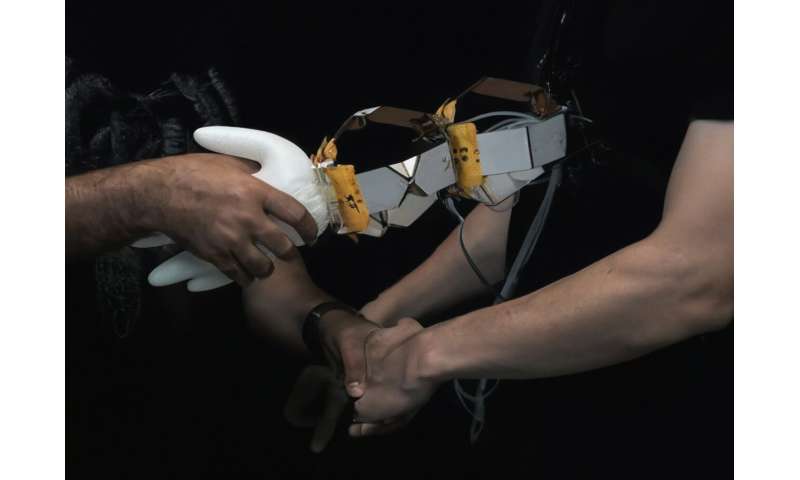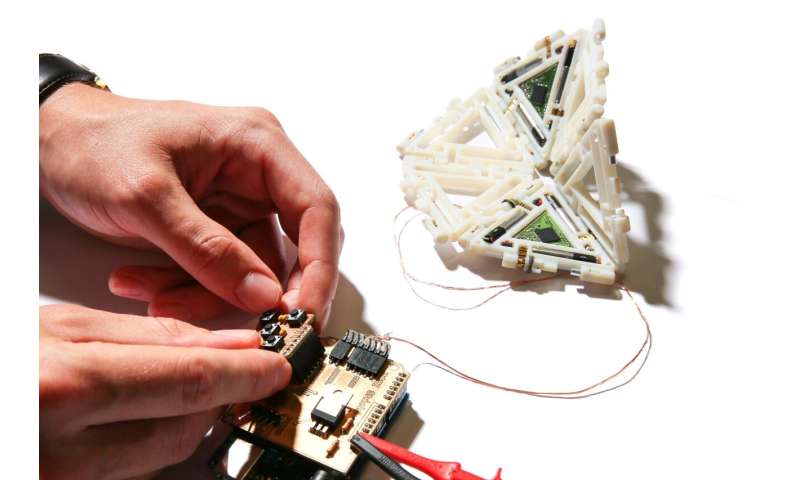From TV to reality: how transformable robots will change our life

Once heroes of a famous TV series, transformable robots are now a reality. Capable of adapting their shape and functions to unexpected scenarios, they will assist astronauts, help surgeons and revolutionise the food processing industry.
If you grew up in the 80s or the 90s, you will have hardly missed "The Transformers", an American animated series that mesmerized and marked a whole generation, with its futuristic heroes: as its title reveals, a team of transformable robots, capable of changing shape within seconds and, still with the same components, turning into fighting jets, armoured cars or whatever tool was needed to repel the enemy's attacks. Not to counter alien threats, but still to serve humanity, this concept has now become a reality thanks to Jamie Paik. Head of a laboratory that she refrained from calling "Transformers" just to avoid being over-shadowed on Google by the Marvel TV series, she describes her hyper-technological "creatures" by referring to another landmark TV series of the same years: "They are MacGyver-style, transformable robots, capable of adapting to different environments, and serving like Swiss knife to face all kind of unexpected scenarios".
It's like all this was coming from space…
And space is indeed the environment where we can best highlight the capabilities of these robots. If we have a problem on Earth, we still have more room for solving it with existing technologies, but over there we have limited resources. This is why transformable and multitasking robots can be precious.
Just a dream so far, or already something concrete?
Prof. Jamie Paik, founder and director of the Reconfigurable Robotics Lab (RRL) of Swiss Federal Institute of Technology (EPFL) and core member of Swiss NCCR robotics group. Credits: Reconfigurable Robotics Lab, EPFL.
It's something we've been already working on, with both the European and the Swiss Space Agencies. What we're now trying to develop are especially applications to help the astronauts accomplish their tasks inside the International Space Station.
Back to Earth, what can these transformable robots be useful for?
Some of the most exciting applications are in the medical world. This design approach can be used for surgical tools that need to be deployed into the human body. The most common ones are now mini-cameras, or very small scissors and forceps, but the next step will be tools replacing the doctor's hands, but much smaller. What surgeons do want is to retain the ability to feel what they are doing and touching inside a patient's body.
Such technologies are now also being tested within Mozart, a European project aimed at improving the food packaging processes. Why?
We are exploring how to let robots manipulate delicate items without damaging them. If you handle products such as cheese, for instance, slightly too much pressure can poke holes in it. Or think of pizza: if it's very thin and soft, you can't pick it up with your fingers. You need a pizza peel, something flat. And that's why we are trying to develop a way of manipulating food items with surfaces, instead of hard grippers. But if they are hard, you can only let the product slide, not properly control it. On the contrary, movable surfaces made up of multiple sections are suitable for all kinds of manipulations.
What would the advantages be?

More efficiency, more profit…
It's not for the sake of being more economically profitable. What I want from my robots is for them to make people's lives better. Relieving line workers from repetitive, manual tasks means avoiding injuries, but it also gives them the opportunity for a more enjoyable working and social life.
Crucial in such an approach is the concept of "interaction". Does it also mean that the robots "feel" the items that they manipulate?
Yes, for handling softer products, they first need to 'understand' their weight, stiffness, and size. And then they will manipulate them accordingly. In my 2019 Ted Talk, I showed joysticks that gave force feedback and made you feel what you saw on the screen. Now we can do the same with your whole body and let you really 'be there,' sense the feeling of climbing on the top of an iceberg or walking on a dune.
How much of it is "reality"?
It's already technologically possible to make Zoom calls while walking in a forest and let the person behind the screen actually "feel it". You can also connect to existing drone or satellite images and experience what you see. You can also use this technology for rehabilitation purposes, like remotely monitoring physiotherapy sessions.
The concept of transformable robots is rooted in "origami robotics", or "robogami", as you called it in your 2019 Ted Talk. Why this name?
These robots mimic origami, the paper art consisting of folding paper to give it different shapes. They take new forms according to the environment and interact with it. The main point is that instead of using mechanical joints, they rely on foldable ones, and this allows them to be much thinner, lighter, and agile.
You are among the pioneers of origami robotics. Where did the idea come from?
I wanted my robots to be multitasking, to be adaptable to the world and to multiple environments, instead of just performing one single task. The idea started back at Harvard, where we had a project called "Programmable matter", but it's at the EPFL, École Polytechnique Fédérale de Lausanne, that I started working on more functional robots.
They've since proven to be not only functional, but also very advanced, and flexible. Should we fear them one day they will replace us?

Contacts:
MOZART Project coordinator:
Kasper Støy—IT Universitetet i København
Communication and Dissemination Officer:
Chiara Bartolacci—ICONS
Project website: https://mozart-robotics.eu
Twitter: @MozartRobotics
LinkedIn: @mozartrobotics
YouTube: @mozartrobotics
Provided by iCube Programme